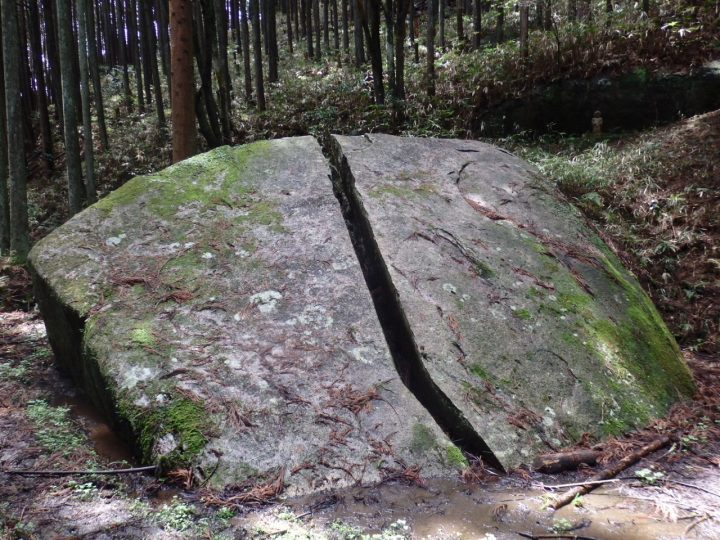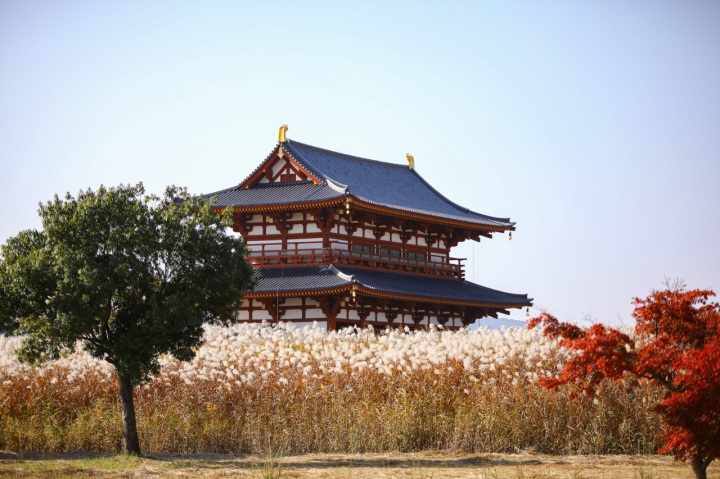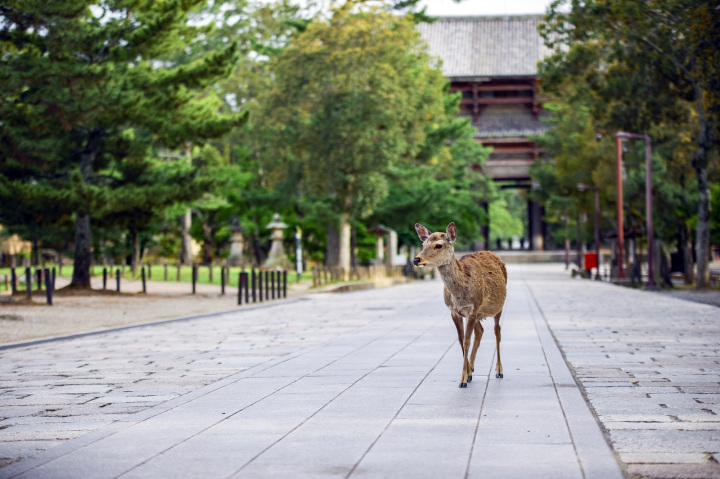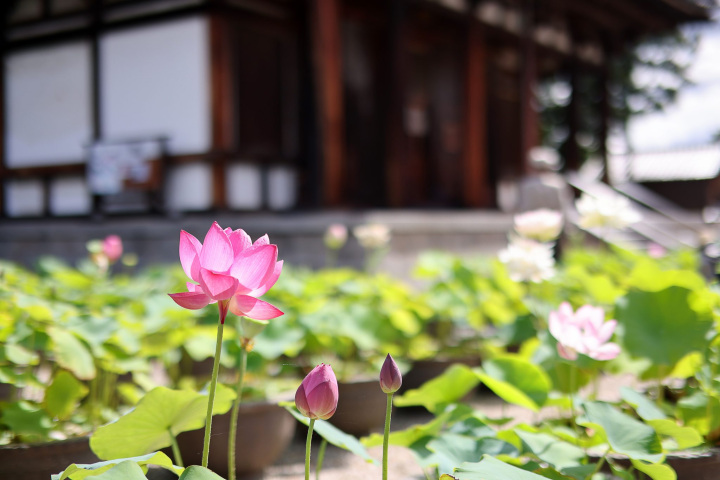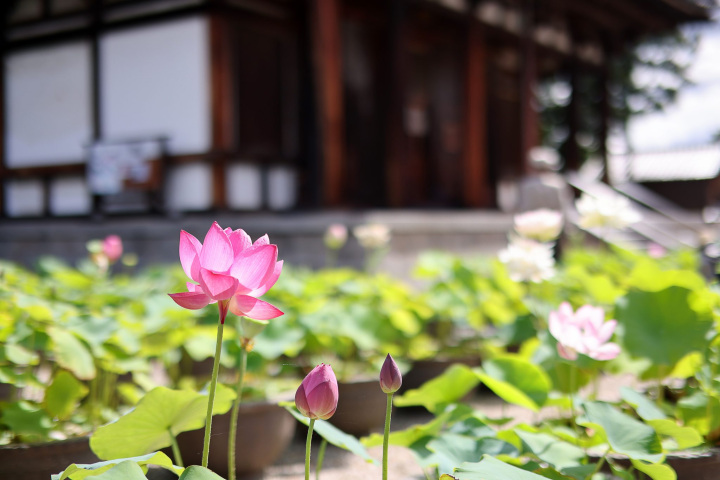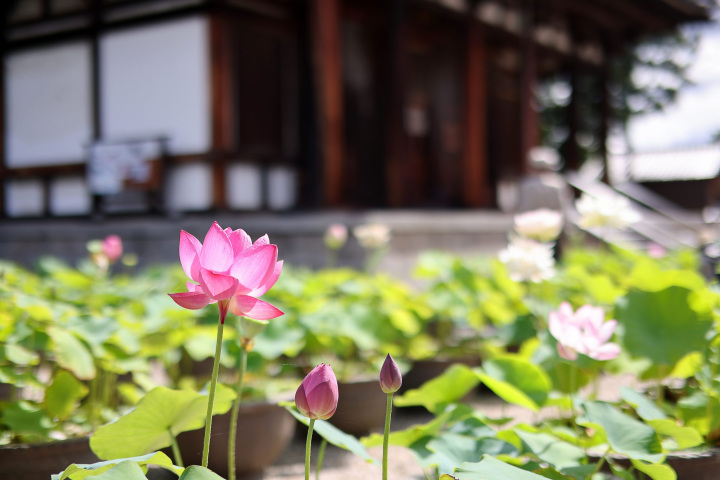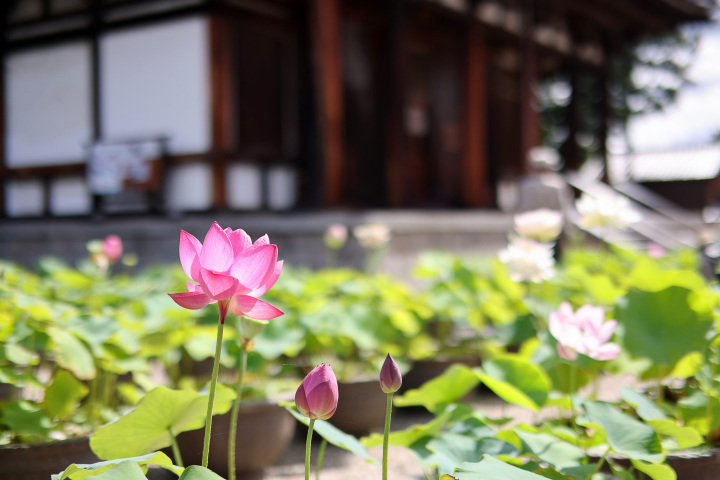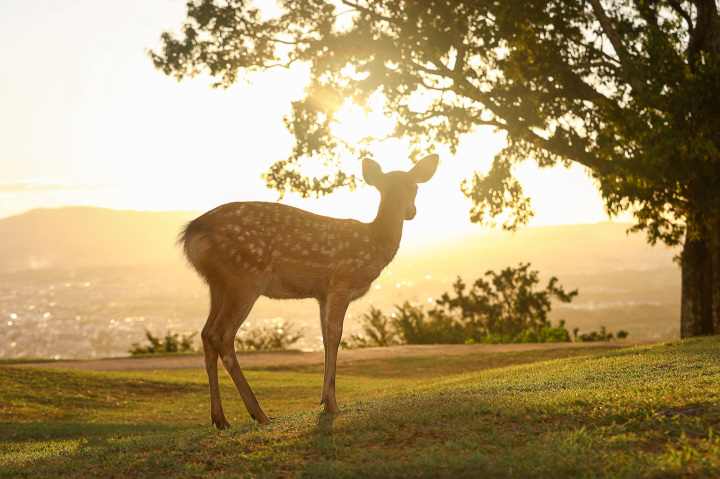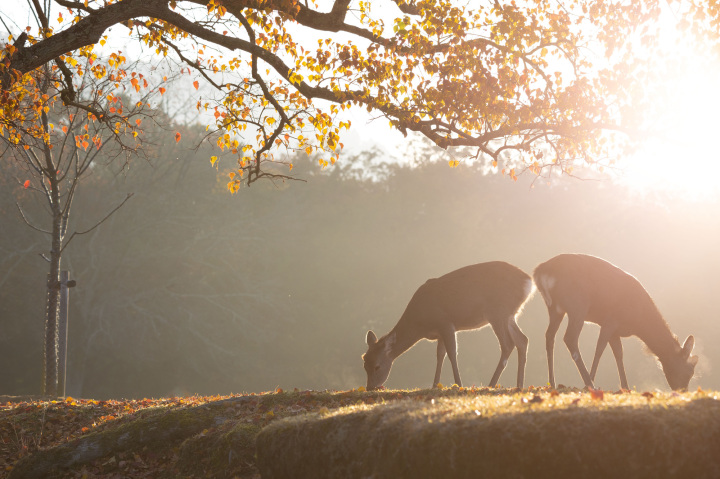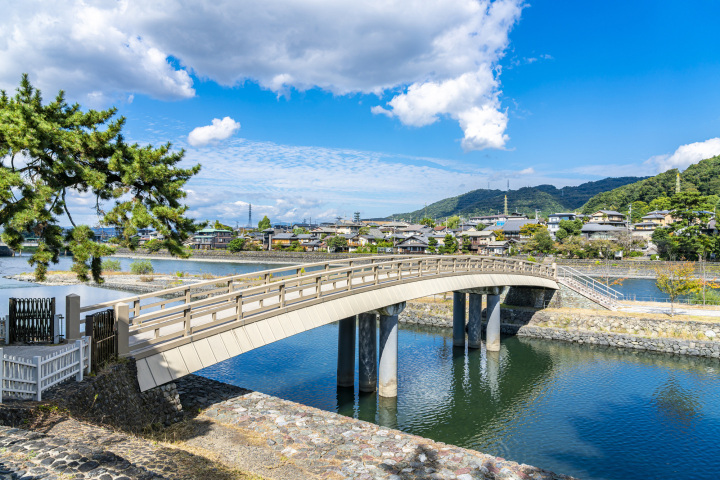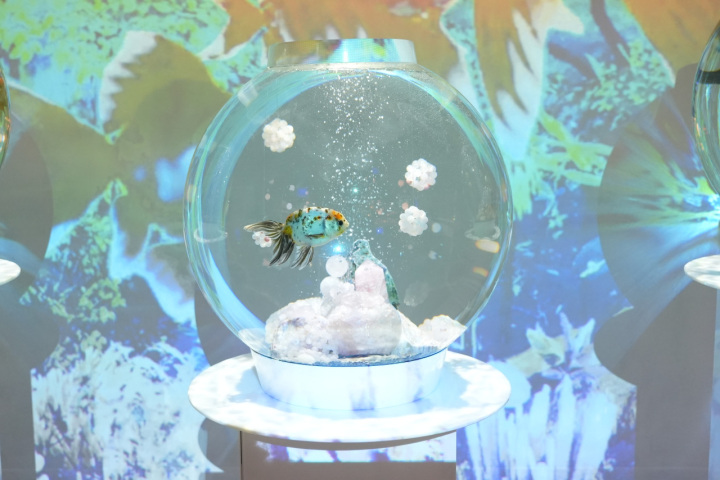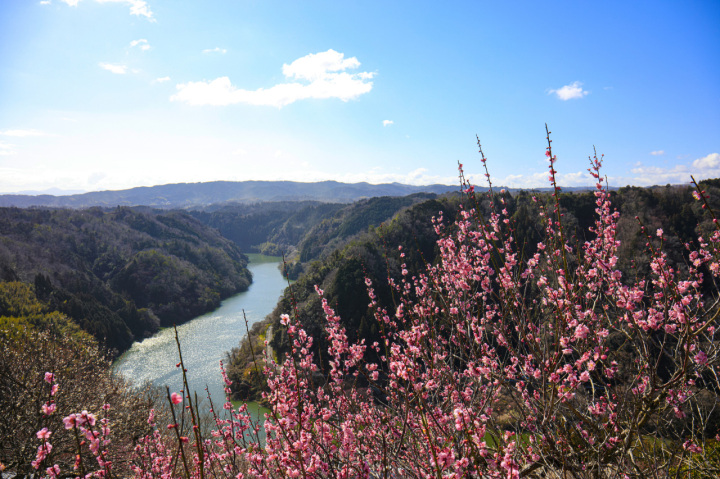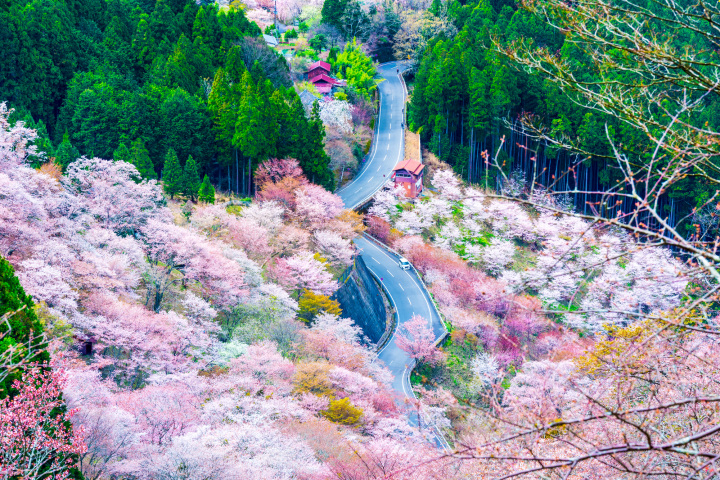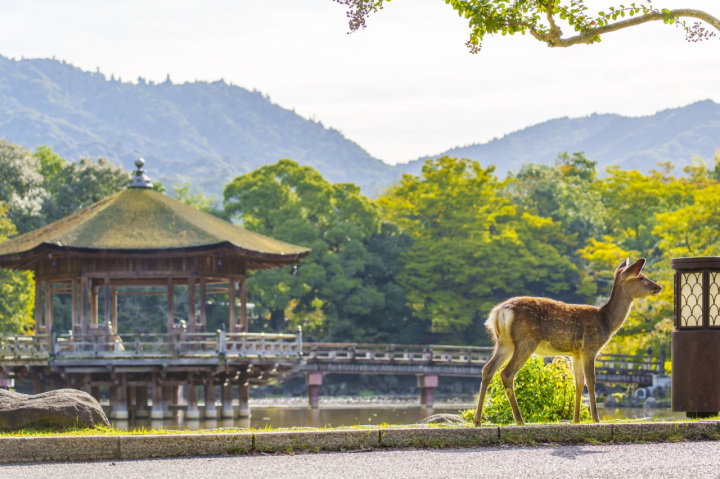Itinerary for 3 days and 2 nights to enjoy Kyoto, Nara, and Osaka to the fullest
To fully enjoy Kyoto, Nara, and Osaka, the royal tourist destinations of the Kansai region, it is efficient to use Nara as a base from which to tour around! Since both Kyoto and Osaka are only about an hour away, you can enjoy your trip without worrying about the stress of leaving your luggage at a hotel in Nara if you stay at a hotel in Nara for consecutive nights. On this page, we will introduce you to Nara's attractions, as well as recommended courses to visit Nara in combination with Kyoto and Osaka!
- Days required
- 3 days and 2 nights
- Main methods of transportation
- Train, bus, walking
Itinerary features
- Former Daijo-in Temple Garden(Daijo-in Temple Garden Heritage Center)
- [Lunch] Around Naramachi
- Naramachi Museum
- Strolling in Naramachi
- Kohfuku-ji Temple
- Sarusawa Pond
- Kasugataisha Shrine
- Nara Park
- Rokuen
- [Lunch] Nara Park area
- Nara National Museum
- HIMUROJINJA
- Todai-ji Temple
- Nigatsu-dō
- Yakushi-ji Temple
- [Lunch] Around Nishinokyo Station
- Toshodai-ji Temple
- Dotonbori
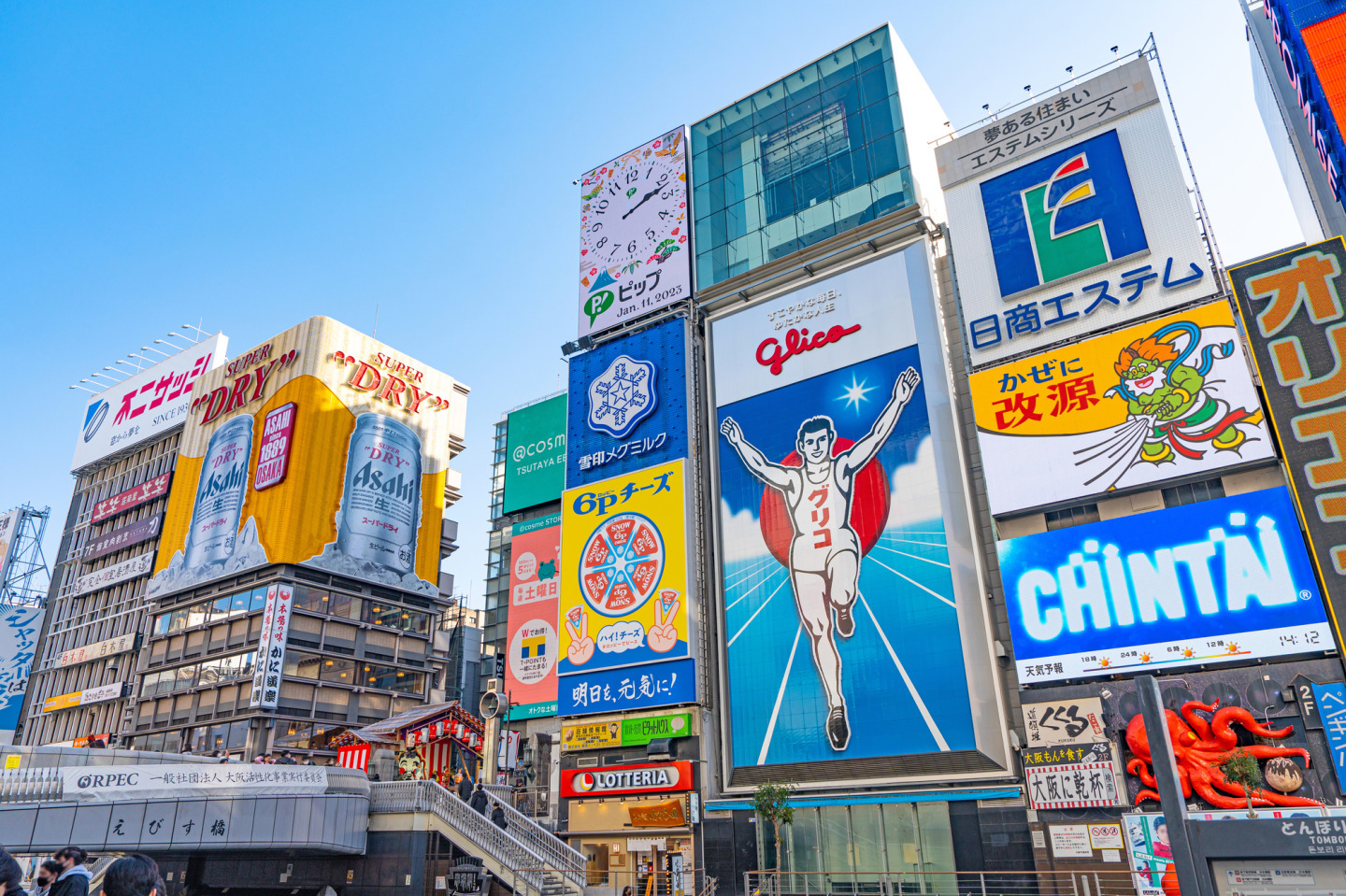
Approximately 15 minutes on foot
Former Daijo-in Temple Garden(Daijo-in Temple Garden Heritage Center)
![[ Undefined: coursed-title-plain ]](/lsc/upfile/spot/0001/0090/10090_1_l.jpg)
The garden of Daijyo-in Temple, the most prominent subsidiary of Kohfukuji Temple, was renovated in the mid-15th century by Zenami and his son, who were invited from Kyoto. Zenami, a master gardener favored by Ashikaga Yoshimasa of the Muromachi Shogunate, made significant contributions to its development. A section of the garden still exists today just south of the Nara Hotel. The Daijyo-in Garden Cultural Center, situated in a corner of the garden, features a restored model of the former Daijyo-in Temple, along with related artifacts.
- Address
- Nara City1083-1 Takabatake-cho
- Times
- 9 a.m. - 5 p.m.
- Closed
- ・Monday (or the following day if Monday is a public holiday)
- The day after a public holiday (excluding Saturdays and Sundays)
- New Year's holiday (December 26 - January 5)
*It may temporarily open during the New Year's holiday. Please kindly contact the reception in advance.
[Lunch] Around Naramachi
Naramachi is one of the most fashionable areas in the city, with restaurants scattered among traditional merchant houses and townhouses. A wide variety of lunch options are available, including Japanese, Italian, and Western cuisine. There are also many restaurants where you can taste Nara's ingredients, and you will surely feel “Nara” in this area. Many of the restaurants are popular and have a limited number of seats, so advance reservations are recommended.
Naramachi Museum
Houses precious materials such as nostalgic old signs, artworks, folk materials, and Buddhist statues
![[ Undefined: coursed-title-plain ]](/lsc/upfile/courseDetail/0000/0102/102_1_l.jpg)
Founded as a private museum in 1985, the Naramachi Museum houses precious materials such as nostalgic old signs, artworks, Naramachi folk materials, and Buddhist statues. It is open to the public free of charge. These items, which have withstood the elements for many years, have inspired people throughout time and continue to be talked about as part of the charm of Naramachi, which still shines today.
- Address
- Nara City14 Nishi-no-shinya-cho
- Times
- 10:00~16:00
- Closed
- (Excluding public holidays) Tuesdays, Wednesdays, and Thursdays
Strolling in Naramachi
![[ Undefined: coursed-title-plain ]](/lsc/upfile/courseDetail/0000/0104/104_1_l.jpg)
After lunch and a tour of the museum, take a leisurely stroll down the alley characterized by machiya with lattice windows. There are also cafes and general stores that have renovated old buildings, where you can enjoy not only the exteriors but also the interior furniture and architectural style. In Naramachi, red ball-like objects are hung from the eaves here and there. These are called “migawarizaru (scapegoat monkey),” which are used to ward off evil spirits, and add a vivid accent to the calm colors of the townscape.
Image: Scenery of Naramachi
Kohfuku-ji Temple
The prosperity of Nara is deeply linked to the development of this temple.
![[ Undefined: coursed-title-plain ]](/lsc/upfile/spot/0001/0029/10029_1_l.jpg)
The Kohfukuji Temple was one of the seven most prominent temples of the Nara era and a tutelary temple of the Fujiwara clan, the most influential clan in Japanese history. Nara largely owed its prosperity to the temple's development.
In 710, the Fujiwara clan transferred the predecessor of the present Kohfukuji Temple from Asuka to the Nara capital. Then, the temple extended its influence with the Fujiwara family's prosperity even after the capital moved to Kyoto. The war in 1180 burned down most of the temple, however, in later years, Kohfukuji eventually became the practical ruler of Yamato Province (present Nara Pref.) until the 16th century. They were so influential that they repeatedly appealed to the Imperial Court in Kyoto with soldier monks.
The vast precincts of the temple include the Chukon-do Hall, the Tokon-do Hall, the Hokuen-do Hall, the Nan'en-do Hall, the Five-storied Pagoda, the Three-storied Pagoda, and the Treasure Hall, some of which were constructed in and after the 13th century. As for Buddhist sculptures, many famous articles and masterpieces of the Nara era exist. Of these 136 designated national treasures (Buddha statues, etc.) in Japan, 18 are housed at Kohfukuji Temple. The most famous statue is the Asura Statue.
The five-story pagoda is currently undergoing long-term repair work and cannot be seen from the outside.
- Address
- Nara City48 Noborioji-cho
- Times
- open from 9:00 a.m. to 5:00 p.m. (Last entry is at 4:45 p.m.)
- Closed
- Open all year
Sarusawa Pond
The center of Nara and one of the "Nara Eight Views"
![[ Undefined: coursed-title-plain ]](/lsc/upfile/spot/0001/0110/10110_1_l.jpg)
Sarusawa-ike Pond is a pond with a circumference of 360 meters situated in Nara Park in Nara City, Nara Prefecture. The stunning reflection of Kohfukuji Temple's five-story pagoda and the surrounding willows on the water's surface is regarded as one of the "Eight Views of Nara."
Sarusawa-ike Pond is an artificial pond built in 749 as a pond for the Hojo-e ceremony of Kohfukuji Temple. Hojo-e is a religious ceremony in which captured creatures are released back into the wild and all living things are cherished.
On the north side of Sarusawa-ike Pond are the five-story pagoda of Kohfukuji Temple and the stone steps known as the Goju-ni-dan, which comprise 52 steps. Sanjo-dori Street runs east-west between them and the pond, connecting JR Nara Station to the approach of Kasugataisha Shrine.
The seven mysteries of Sarusawa-ike Pond have been well-known since ancient times:
1. The water is never clear.
2. It is never muddy.
3. There is no river flowing into it.
4. No rivers are flowing out, yet the water level remains constant.
5. There are no frogs.
6. There is no algae.
7. Even though many fish are released into the pond each year, it is never overcrowded with fish.
Every autumn, on the day of the harvest moon, the Uneme Festival, an annual event at Uneme Shrine, located on the banks of the pond, is held.
- Address
- Nara CityHashimoto-cho
Kasugataisha Shrine
The shrine of the Fujiwara clan associated with the legend of the divine deer.
![[ Undefined: coursed-title-plain ]](/lsc/upfile/spot/0001/0058/10058_1_l.jpg)
The Kasugataisha Shrine is situated in a primeval forest. The brilliant vermilion structures beautifully contrast with the surrounding greenery. Passing through the first and second Torii gates, you can see numerous stone lanterns standing on both sides of the path leading to the shrine. Continuing further, you will reach the main hall. From the gate, a corridor extends to both the left and right. A significant number of lanterns hang from the eaves of the corridor, which are illuminated twice a year (2/3 and 8/14-15).
When the capital was transferred to Nara in 710, the Fujiwara clan held a mass for the family's tutelary deities, which is considered the origin of this shrine.
The shrine was established here in 768. Like the Kohfukuji Temple, it flourished alongside the Fujiwara family even after the capital moved to Kyoto. After the Middle Ages, this belief became widespread among common people, as evidenced by the fact that both dignitaries and ordinary citizens donated various hanging and stone lanterns.
The tutelary deities enshrined here are Takemikazuchi-no-Mikoto from Kashima (Ibaraki Prefecture), Futsunushi-no-Mikoto from Katori (Chiba Prefecture), and Amenokoyane-no-Mikoto and Himegami from Hiraoka (Osaka Prefecture).
- Address
- Nara City160 Kasugano-cho
- Times
- Opening Hours:
March to October: 6:30 AM to 5:30 PM
November to February: 7:00 AM to 5:00 PM
■National Treasure Hall
9:00 AM to 5:00 PM (Last admission at 4:30 PM)
■Kasuga Taisha Shrine Manyo Botanical Garden
9:00 AM to 4:30 PM (Last entry at 4:00 PM) - Closed
- ■Treasure Hall: Closed except during three annual special exhibitions.
■Kasuga Taisha Shrine Manyo Botanical Garden
・April-May: Always open
・June-March: Closed on Tuesdays
(Should national holidays fall on a Tuesday, the garden will be closed the following day)
Nara Park
The majestic park, fitting for the ancient capital, harmonizes with beautiful lawns and rich natural surroundings, where 1,300 wild deer draw many visitors.
![[ Undefined: coursed-title-plain ]](/lsc/upfile/spot/0001/0089/10089_3_l.jpg)
This vast park, spanning approximately 660 hectares, covers the eastern part of Nara City. It is a majestic park that befits the ancient capital, incorporating Todaiji Temple, Kohfukuji Temple, Kasugataisha Shrine, the Nara National Museum, and the Kasugayama Primeval Forest.
In this park, which harmonizes with beautiful lawns and rich natural surroundings, including 1,000-year-old pine trees, approximately 1,300 wild deer roam in herds. These deer are considered the legendary divine deer of Kasugataisha Shrine, making it a tourist spot that symbolizes the ancient capital of Nara and attracts many visitors.
- Address
- Nara CityKasuga-cho
- Closed
- Open year-round
Rokuen
A cozy protection facility for Nara deer, where you can enjoy events like "Fawn Open House" and "Deer Antler Cutting."
![[ Undefined: coursed-title-plain ]](/lsc/upfile/courseDetail/0000/0118/118_1_l.jpg)
Nara Park is home to approximately 1,300 Nara deer (as of 2024), a designated natural monument of the country.
"Rokuen," the Deer Garden, is a deer protection facility located within Nara Park and operated by the Nara Deer Protection Foundation. It protects approximately 300 deer, including sick or injured ones, and aims to create an environment where people and deer can coexist.
In addition to exhibits, such as panels that educate visitors about deer ecology and history, guests can observe the deer protected in the Rokuen throughout the seasons. This is a place to reflect on and safeguard Nara Park's rich nature and the coexistence of people and deer.
- Address
- Nara City160-1 Kasugano-cho
- Times
- 10:00 AM - 4:00 PM
(Not applicable during special exhibition periods) - Closed
- Mondays (except during special public viewing periods)
Deer antler cutting event (early October)
New Year's holiday (December 29 to January 3)
[Lunch] Nara Park area
![[ Undefined: coursed-title-plain ]](/lsc/upfile/courseDetail/0000/0119/119_1_l.jpg)
Teahouses with an old-fashioned atmosphere are scattered around Nara Park. They are recommended for lunch, as you can take a break or have a meal at a table. There are also cafes and restaurants on the road from Nara Park to Todaiji Temple that are perfect for lunch, so use Google Maps to find one that interests you.
[Image: Mizuya Chaya
Nara National Museum
The treasure trove of Buddhist art hosts the "Shosoin Exhibition" every autumn.
![[ Undefined: coursed-title-plain ]](/lsc/upfile/spot/0001/0043/10043_1_l.jpg)
Many masterpieces of Buddhist art, including Buddhist sculptures and paintings, are on display, and the Nara Buddhist Temple has nearly 100 Buddhist statues on permanent display.
The New Building hosts special exhibitions approximately twice a year. Notably, the autumn Shosoin Exhibition draws many fans from across the country.
The Main Building, completed in 1894 and designed by Katayama Tokuma, who also worked on Akasaka Palace (State Guest House), is designated an Important Cultural Property as a representative example of Western-style architecture from the Meiji period.
- Address
- Nara City50 Noborioji-cho, Nara 630-8213
- Times
- 9:30 a.m. - 5:00 p.m. (Last entry at 4:30 p.m.)
*Hours may be extended for special exhibitions and other events. Please check the official website for details. - Closed
- ・Mondays (Or the following day on weeks in which Monday is a public holiday. In cases of consecutive holidays, the museum remains open and closes the day after they end.)
・December 28 - January 1
HIMUROJINJA
![[ Undefined: coursed-title-plain ]](/lsc/upfile/spot/0001/0056/10056_1_l.jpg)
The name of this shrine, “Himuro,” literally means “ice room,” a reference to the god enshrined therein: the guardian of artificial ice and refrigeration. On the first of each month, “ice lanterns” (koori kentou) are lit: votive candols are lit within ice vessels, which shine exquisitely around the shrine. Visitors in the springtime can also see an extraordinary weeping cherry tree reknowned as the most beautiful cherry blossom tree in Nara. In recent years, an event called “Himuro Shirayuki Festival” has brought together many varieties of shaved ice from around Nara and Japan.
Todai-ji Temple
Nara's most famous temple, featuring its principal image, the Vairocana Buddha, is known worldwide as the Great Buddha of Nara.
![[ Undefined: coursed-title-plain ]](/lsc/upfile/spot/0001/0001/10001_1_l.jpg)
Todaiji Temple and its principal image of the Great Buddha, widely known as Daibutu, represent Nara in all its aspects. Daibutsu is housed in an imposing wooden structure that is the largest in the world.
As the imperial ordinance for the construction in 743, the Great Buddha was cast under full state sponsorship and people's cooperation. The consecrating ceremony was held in 752. It took almost 40 years to complete the whole temple complex, including pagodas, halls, and gradually extended areas. Even after the capital moved to Kyoto, the temple enjoyed its prosperity under the protection of successive emperors. However, the two big wars attacked the temple in 1180 and 1567, severely damaging or burning most of it.
However, with tremendous efforts, the temple was restored each time. Many of the current buildings were reconstructed after that. However, a large number of noted Buddhist statues and buildings from the Nara era remain. Todaiji Temple is a Unesco World Heritage site.
A typical sightseeing course is as follows:
the Nandai-mon Gate
the Daibutsu-den Hall
the Belfry
the Shunjo-do Hall
the Sammai-do Hall (Shigatsu-do)
the Hokke-do Hall (Sangatsu-do)
the Kaisan-do Hall
the Nigatsu-do Hall
the Tegai-mon Gate
the Kaidan-in
Even if you quickly complete the whole course, it takes 4 hours. If you don't have much time, it's better to focus on the Daibutsu-den Hall first, then the Nigatsu-do Hall (the Hall for the Shunie ceremony in March), where you can see an incredible sunset in the west.
(15 minutes' walk from Kintetsu Nara Station)
- Address
- Nara City406-1 Zoshichou
- Times
- ■Great Buddha Hall (Daibutsuden)
April to October: 7:30 AM - 5:30 PM
November to March: 8:00 AM - 5:00 PM
■Hokkedo Hall (Sangatsudo) & Kaidando Hall
Open year-round: 8:30 AM - 4:00 PM
■Todaiji Temple Musem
April to October: 9:30 AM - 5:30 PM (last entry at 5:00 PM)
November to March: 9:30 AM - 5:00 PM (last entry at 4:30 PM) - Closed
- Open all year
Nigatsu-dō
![[ Undefined: coursed-title-plain ]](/lsc/upfile/courseDetail/0000/0127/127_1_l.jpg)
Nigatsu-dō is located on a hill at the eastern end of the Todaiji Temple grounds, and from the stage you can see the whole city of Nara. When the weather permits, visitors can enjoy a spectacular view of the cityscape and mountains at sunset. After the sun goes down, the lanterns are lit and the atmosphere becomes even more magical, making this a perfect spot to end your visit to the ancient capital of Nara.
Image: Nigatsu-dō of Todaiji Temple
Yakushi-ji Temple
Established in 680, the unique layout known as Yakushiji-style is also referred to as "Ryugu-zukuri" (Dragon Palace style).
![[ Undefined: coursed-title-plain ]](/lsc/upfile/spot/0001/0007/10007_1_l.jpg)
Yakushiji Temple is a UNESCO World Heritage site. It was established in 680 by Emperor Tenmu as a prayer for the recovery of his empress from illness. When the capital was relocated from Fujiwara-kyo to Nara, it was subsequently moved to its current location in 718. Two three-story pagodas, the Eastern and Western Pagodas, were built around the main hall and lecture hall. The unique layout is known as the Yakushiji-style temple complex, and the magnificent exterior of these main buildings, with their sloped roofs and low floors, is also referred to as "Ryugu-zukuri" (Dragon Palace style).
Unfortunately, repeated fires destroyed most of the buildings, and only the eastern pagoda remains in its original state. The other structures have been rebuilt.
Yakushiji is home to nine national treasures and 26 important cultural properties, and it remains a temple with a strong following of religious practitioners.
After visiting this temple, consider visiting the nearby Toshodaiji Temple.
- Address
- Nara City457, Nshinokyo-cho
- Times
- 9:00 a.m. to 5:00 p.m. (The admission desk will be open until 4:30 p.m.)
- Closed
- Open all year
[Lunch] Around Nishinokyo Station
![[ Undefined: coursed-title-plain ]](/lsc/upfile/courseDetail/0000/0135/135_1_l.jpg)
Unlike the bustling Nara Park area, the historic Nishinokyo area has a peaceful atmosphere with private homes and rice paddies. Along the historical ally from Nishinokyo Station to Yakushiji Temple and Toshodaiji Temple, you can enjoy some Japanese soba noodles and other restaurants. The area also has cafes, so enjoying a leisurely lunch is recommended. Two prominent temples in this area (Yakushiji and Toshodaiji) are both Unesco World Heritage sites.
Image: Kintetsu Nishinokyo Station
Toshodai-ji Temple
Founded by the Chinese monk Ganjin, who overcame hardships to come to Japan and spread the correct precepts of Buddhism.
![[ Undefined: coursed-title-plain ]](/lsc/upfile/spot/0001/0008/10008_1_l.jpg)
Toshodaiji Temple, a UNESCO World Heritage Site, was founded in 759 by the Chinese monk Ganjin, who overcame hardships to come to Japan in response to an invitation from Emperor Shomu in order to spread the correct precepts of Buddhism.
After the capital was moved to Kyoto, the temple experienced a period of decline, but it has since been restored several times. The temple complex is beautifully surrounded by greenery, and still conveys the atmosphere of the time of its founding in the Nara period.
Many of the buildings from that time remain, including the Kondo Hall, known for its "Tenpyo roof," the lecture hall, and the treasure hall. The entire temple complex retains its appearance from 1,300 years ago.
- Address
- Nara City13-46 Gojo-cho
- Times
- 8:30 a.m. - 5:00 p.m. (Last entry at 4:30 pm.)
- Closed
- Open all year
Dotonbori
![[ Undefined: coursed-title-plain ]](/lsc/upfile/courseDetail/0000/0139/139_1_l.jpg)
Dotonbori is one of Osaka's most popular tourist spots. Walking through the streets with their glittering neon lights, you can enjoy the lively and unique atmosphere.
Take a picture in front of the famous Glico sign, and then enjoy takoyaki, okonomiyaki, kushikatsu, and other specialties to your heart's content.
Image: Osaka Dotonbori
